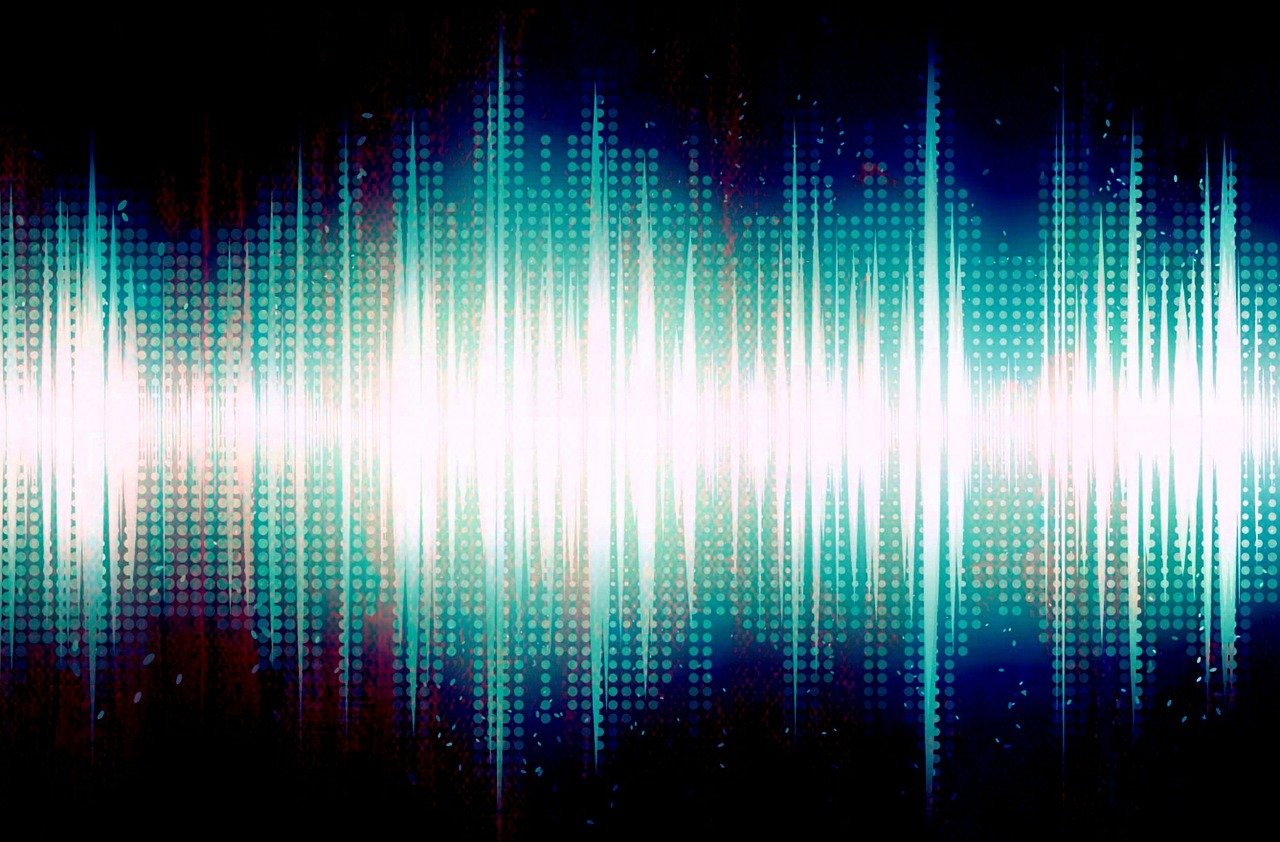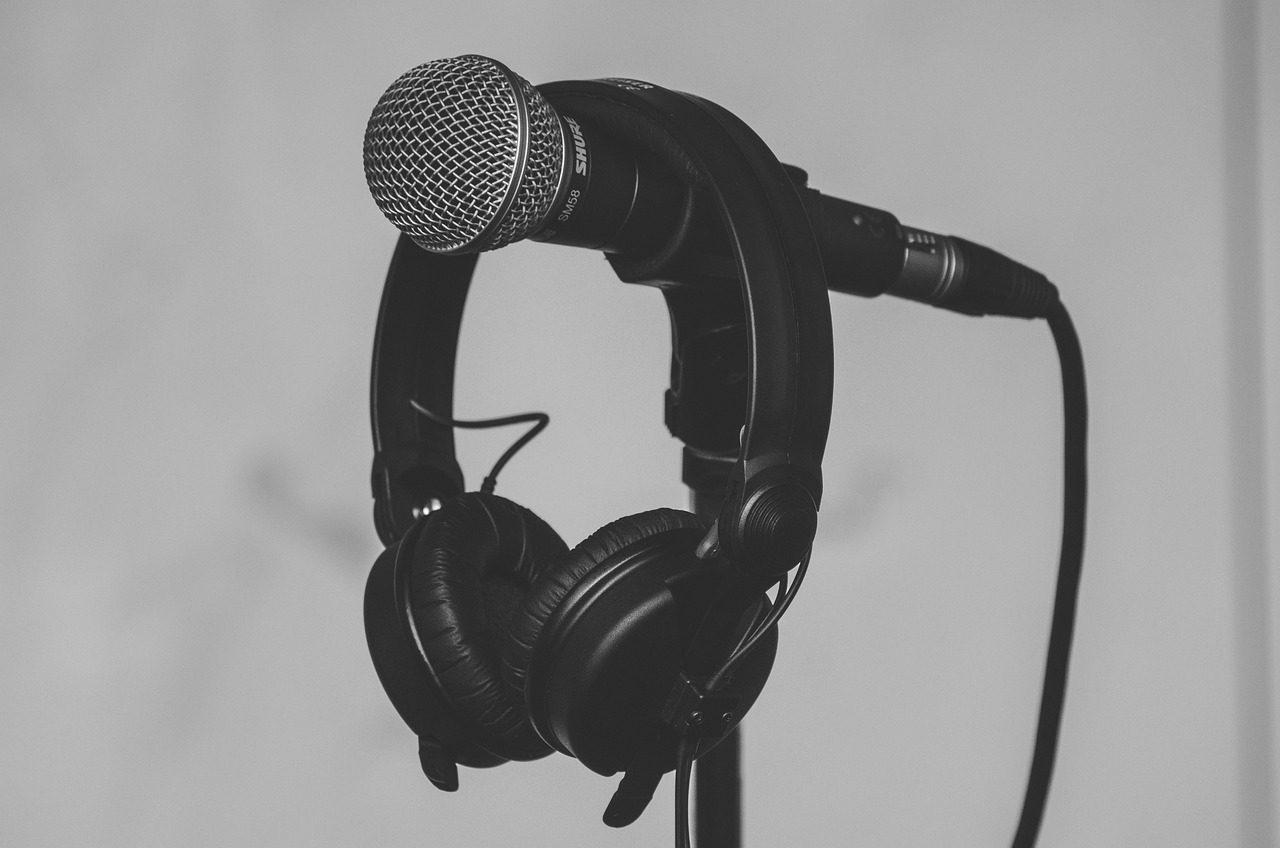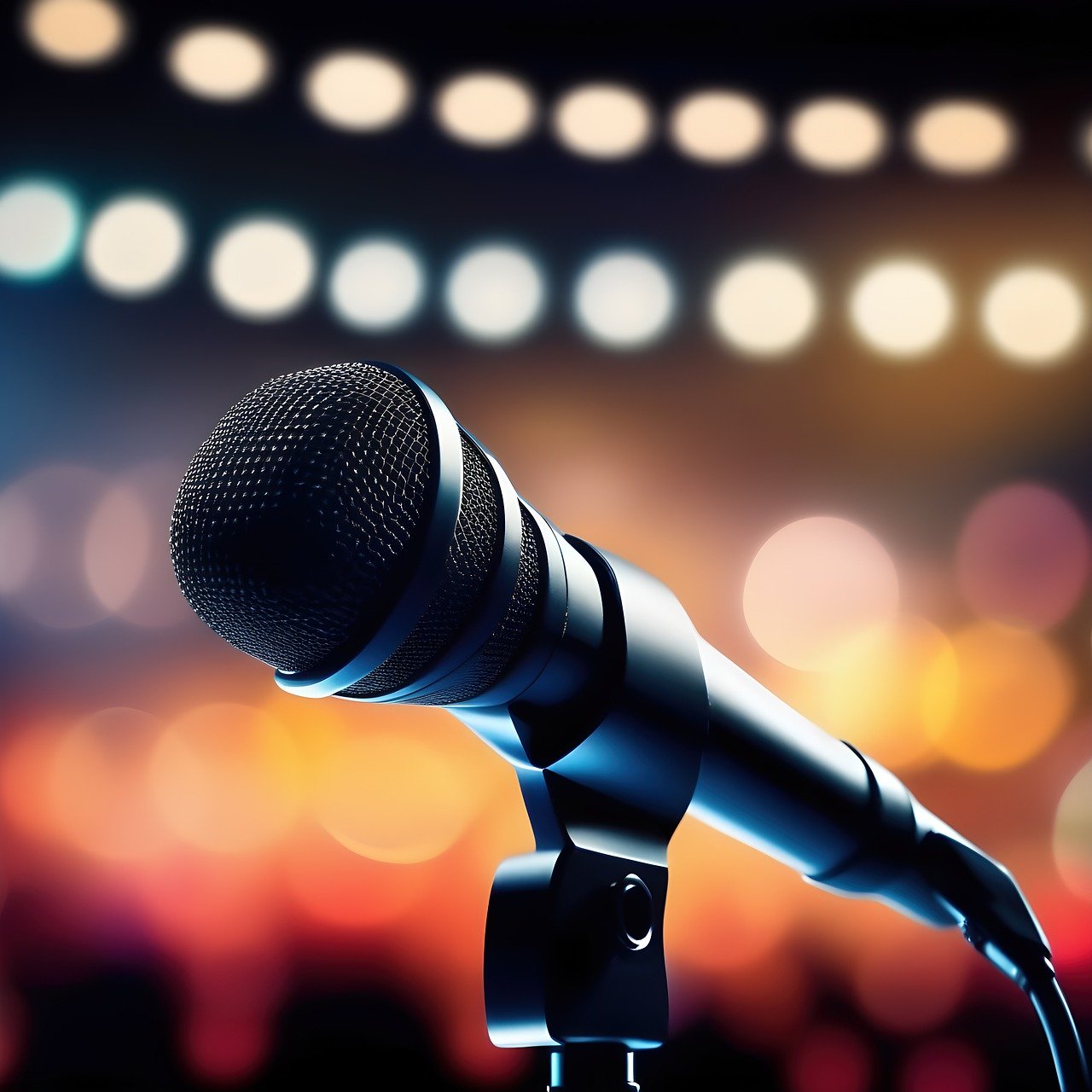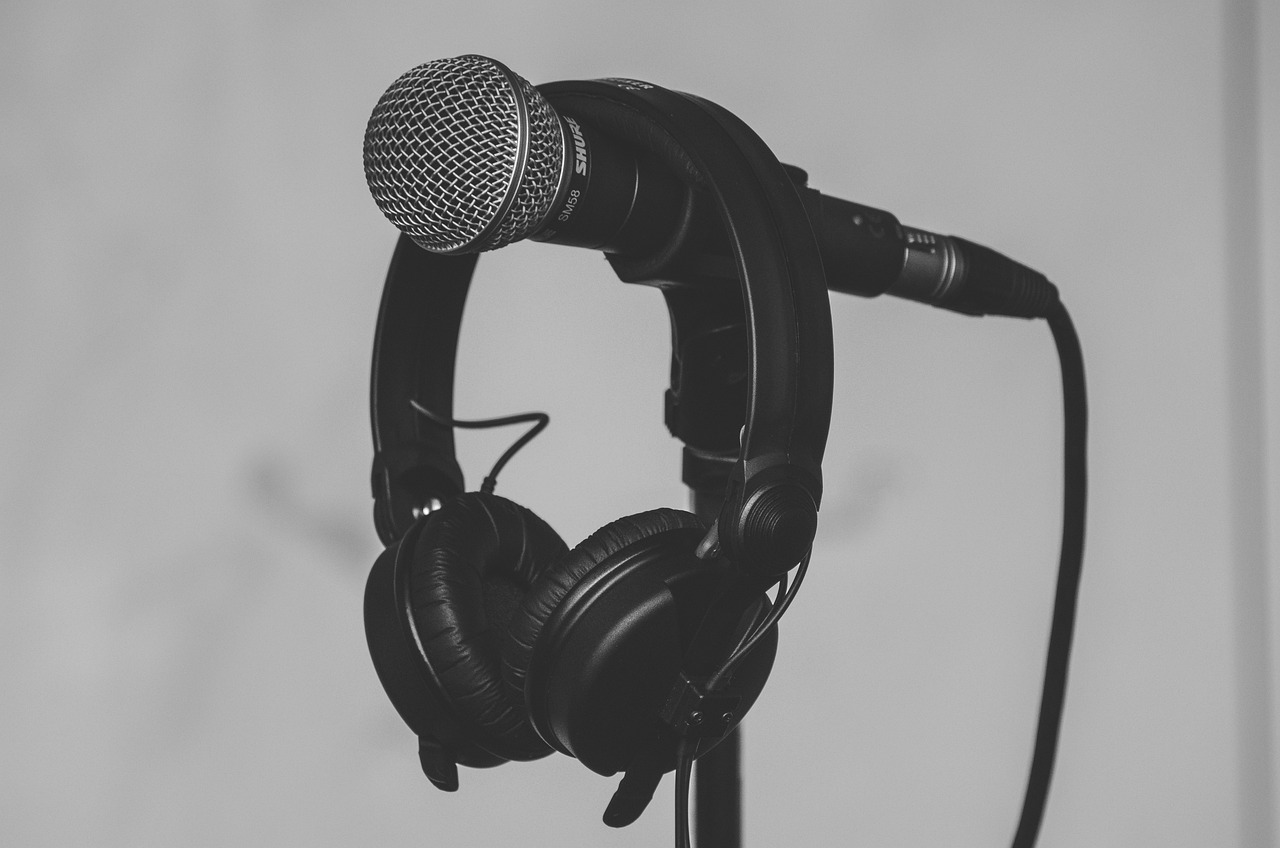Imagine you’re stepping into the world of podcasting, ready to embark on a journey of sharing your thoughts, stories, and ideas with the world. But there’s one crucial piece of equipment that stands between you and your audience: the microphone. With countless options available, it can be overwhelming to choose the right one. In this article, we’ll explore the wonderful world of microphones, examining their capabilities, features, and qualities in order to help you find the best microphone for your podcasting adventures. So, let’s dive in and discover the perfect microphone that will bring your voice to life and captivate your listeners.

Understanding Microphone Basics
Whether you are a podcaster, musician, or interviewer, understanding the basics of microphones is crucial in ensuring that you choose the right one for your needs. Microphones come in various types, each with its own unique features and applications. Additionally, microphone polar patterns and frequency response play a significant role in capturing sound accurately.
Types of Microphones
There are three primary types of microphones: dynamic, condenser, and ribbon. Dynamic microphones are robust and versatile, making them ideal for live performances and podcasting. On the other hand, condenser microphones are more sensitive and deliver excellent sound quality, making them suitable for studio recordings. Ribbon microphones are delicate and capture sound with great detail, making them perfect for capturing instruments and vocals.
Microphone Polar Patterns
Microphone polar patterns refer to the direction from which a microphone captures sound. The three common polar patterns are cardioid, omnidirectional, and bidirectional. Cardioid microphones capture sound from the front and reject noise from the sides and rear, making them great for podcasting and vocals. Omnidirectional microphones capture sound from all directions, making them suitable for capturing ambient sound or group discussions. Bidirectional microphones pick up sound from the front and back, making them ideal for interviews and duets.
Microphone Frequency Response
Microphone frequency response refers to the range of frequencies a microphone can capture. It is important to consider the frequency response when choosing a microphone as it affects how accurately it reproduces sound. For example, a microphone with a flat frequency response captures sound across the entire audible spectrum evenly. Some microphones are designed to emphasize certain frequencies, such as those suited for capturing vocals or instruments.
Choosing the Right Microphone for Your Needs
Choosing the right microphone involves considering various factors, including your recording environment, budget, and the purpose of the microphone.
Assessing Your Recording Environment
Before selecting a microphone, it is crucial to assess your recording environment. If you are recording in a controlled studio setting, a sensitive condenser microphone might be suitable. However, if you are recording in a noisy environment, a dynamic microphone with excellent background noise rejection would be more appropriate.
Identifying Your Budget
Microphones come in a range of prices, and it is essential to identify your budget before making a purchase. While more expensive microphones often offer better sound quality, there are budget-friendly options available that still deliver satisfactory results. Consider your needs and prioritize essential features within your budget.
Knowing the Purpose of Your Microphone
Understanding the intended use of your microphone is fundamental in choosing the right one. If you are primarily recording vocals for podcasting, a dynamic or condenser microphone specifically designed for vocals would be suitable. If you require a microphone for recording instruments, such as guitars or drums, consider a model optimized for instrument capture. Clearly defining your microphone’s purpose will help narrow down your options and ensure you make the best choice.
Best Microphones for Podcasting
Podcasting has become increasingly popular, and choosing the right microphone is essential for delivering professional-quality sound.
Dynamic Microphones for Podcasting
Dynamic microphones are widely recommended for podcasting due to their versatility and durability. They are designed to handle high sound pressure levels and reject unwanted background noise. Popular dynamic microphones for podcasting include the Shure SM7B and the Audio-Technica ATR2100x.
Condenser Microphones for Podcasting
Condenser microphones are known for their sensitivity and ability to capture detailed sound. They are widely used in professional studios and are suitable for podcasters who prioritize sound quality. The Audio-Technica AT2020 and the Rode NT1 are popular choices for podcasting purposes.
USB Microphones for Podcasting
USB microphones provide convenience and ease of use, making them suitable for beginner podcasters or those who require portability. These microphones connect directly to your computer via USB and typically have built-in audio interfaces. The Blue Yeti and the Audio-Technica ATR2500x are excellent options for podcasters seeking USB connectivity.
Best Microphones for Music
When it comes to music production, choosing the right microphone is crucial to capture the nuances and richness of vocals and instruments.
Microphones for Vocals
Vocals are the centerpiece of many musical recordings, and selecting the right microphone is crucial. Condenser microphones are often the go-to choice for capturing vocals due to their sensitivity and ability to reproduce detailed sound. Popular options for vocalists include the Neumann U87 and the AKG C414.
Microphones for Instruments
Different instruments have unique sonic characteristics, and choosing the right microphone can help faithfully capture their sound. Dynamic microphones, such as the Shure SM57 and the Sennheiser e906, are commonly used for recording instruments such as guitars and drums. Condenser microphones, like the Audio-Technica AT4050 and the Neumann KM 184, are popular choices for capturing the subtle nuances of pianos, strings, and brass instruments.
Microphones for Live Performances
When it comes to live performances, durability and reliability are key considerations. Dynamic microphones are often the top choice due to their rugged construction and ability to withstand high sound pressure levels. The Shure SM58 and the Sennheiser e835 are widely regarded as industry standards for live vocal performances.

Best Microphones for Interviews
Whether you are conducting interviews for a podcast or journalistic purposes, having the right microphone can greatly enhance the quality of your recordings.
Handheld Microphones for Interviews
Handheld microphones offer ease of use and mobility, making them popular choices for conducting interviews. The Shure SM58 and the Electro-Voice RE50 are commonly used handheld microphones that provide excellent sound quality and durability.
Lapel or Lavalier Microphones
Lapel or lavalier microphones are compact and discreet, making them ideal for interviews where the microphone needs to be inconspicuous. They are typically clipped onto clothing and offer hands-free operation. The Audio-Technica ATR3350x and the Sennheiser ME2-II are popular choices for lapel microphones.
Shotgun Microphones
Shotgun microphones are highly directional and excel at capturing sound from a specific direction, making them suitable for interviews in noisy environments or outdoor settings. They are designed to reject sound from the sides and rear, focusing only on the sound in front. The Rode VideoMic Pro+ and the Sennheiser MKE 600 are widely used shotgun microphones for interviews.
Best Budget Microphones
Not every aspiring podcaster or musician has a large budget to invest in a high-end microphone. Fortunately, there are budget-friendly options available that still deliver satisfactory results.
Budget Microphones for Podcasting
For podcasters on a budget, the Audio-Technica ATR2100x-USB and the Samson Q2U provide excellent audio quality at an accessible price point. Both microphones offer USB and XLR connectivity options, allowing for flexibility in different recording setups.
Budget Microphones for Music Recording
For musicians looking for affordable microphones for home recordings, the Audio-Technica AT2020 and the MXL 770 offer excellent value for the price. These entry-level condenser microphones provide decent sound quality and are suitable for vocals and instrument capture.
Budget Microphones for Interviews
For those on a tight budget who need microphones for interviews, the Audio-Technica ATR3350x and the BOYA BY-M1 are popular choices. These lapel microphones provide decent sound quality and offer great affordability.

Recommended Microphone Brands
When it comes to microphones, certain brands have established themselves as industry leaders, consistently delivering high-quality products.
Audio-Technica
Audio-Technica is renowned for its wide range of microphones catering to various needs and budgets. Their microphones consistently deliver excellent audio quality, making them a top choice for many professionals and enthusiasts.
Shure
Shure has been a trusted name in the audio industry for decades, known for its durable and reliable microphones. Their microphones are widely used in live performances and recording studios, with models such as the SM58 becoming industry standards.
Rode
Rode is an Australian microphone brand that has gained a strong reputation for its high-quality and affordable microphones. Their products are known for their excellent sound capture and build quality, making them popular among podcasters, musicians, and filmmakers.
Blue Yeti
Blue Yeti is a brand known for its USB microphones that offer convenience and excellent sound quality. Their microphones are widely used by podcasters and content creators due to their ease of use and versatility.
A Comparison of Wired and Wireless Microphones
When choosing a microphone, you may have the option to go with either a wired or wireless setup. Understanding the differences between the two can help you make an informed decision.
Reliability
Wired microphones are known for their reliability since there is no risk of wireless interference or signal dropouts. This makes them ideal for live performances where a stable connection is crucial. Wireless microphones, on the other hand, offer more freedom of movement, making them suitable for interviews or performances that require mobility.
Sound Quality
In terms of sound quality, both wired and wireless microphones can deliver excellent results. However, it is important to note that some wireless systems may introduce slight latency or signal degradation. These issues are typically minimal and may not be noticeable in most applications.
Price
Wired microphones generally have a lower upfront cost compared to wireless systems. However, if you require multiple wireless microphones or a complex setup, the cost can escalate quickly. Keep in mind that wireless systems also require additional equipment, such as receivers and transmitters, which can contribute to the overall cost.

Tips for Maintaining Your Microphone
To ensure the longevity and optimal performance of your microphone, it is important to follow proper maintenance practices.
Proper Handling and Storage
Handle your microphone with care, avoiding dropping or subjecting it to unnecessary shocks. When not in use, store the microphone in a dry and dust-free environment. Ideally, use a microphone case or bag to protect it from potential damage.
Regular Cleaning
Regularly clean your microphone to remove any dust, dirt, or debris that may accumulate. Use a soft, lint-free cloth or professional microphone cleaning solutions to gently wipe the microphone’s body and grille. Avoid using harsh chemicals or abrasive materials that could damage the microphone.
Troubleshooting and Repairs
If you encounter any issues with your microphone, refer to the manufacturer’s instructions or seek professional assistance. Avoid attempting any repairs or modifications unless you have the necessary expertise, as this could potentially damage the microphone further.
Final Considerations When Buying a Microphone
Before making a final decision on purchasing a microphone, there are a few additional factors to consider.
Durability
Ensure that the microphone you choose is built to withstand the conditions of your recording environment. Whether you are using it for live performances or studio sessions, a durable microphone will serve you better in the long run.
Ease of Use
Consider how user-friendly the microphone is, especially if you are a beginner or will be using it in different settings. Look for features such as intuitive controls, adjustable polar patterns, and easy connectivity options that suit your needs.
Upgrade Possibility
If you anticipate your recording needs evolving over time, consider a microphone that is versatile and allows for upgrades or additional accessories. This will save you from having to invest in a completely new microphone if your requirements change.
Warranty and Customer Support
Research the warranty and customer support offered by the manufacturer before making a purchase. A reliable warranty ensures that you are protected against potential defects or issues with your microphone, while quality customer support can provide assistance if you require technical help or have questions.
By understanding microphone basics, assessing your needs, and considering various factors, you can confidently choose the right microphone for your podcasting, music, or interviewing endeavors. Remember to keep maintenance practices in mind to ensure your microphone continues to deliver exceptional sound for years to come.

